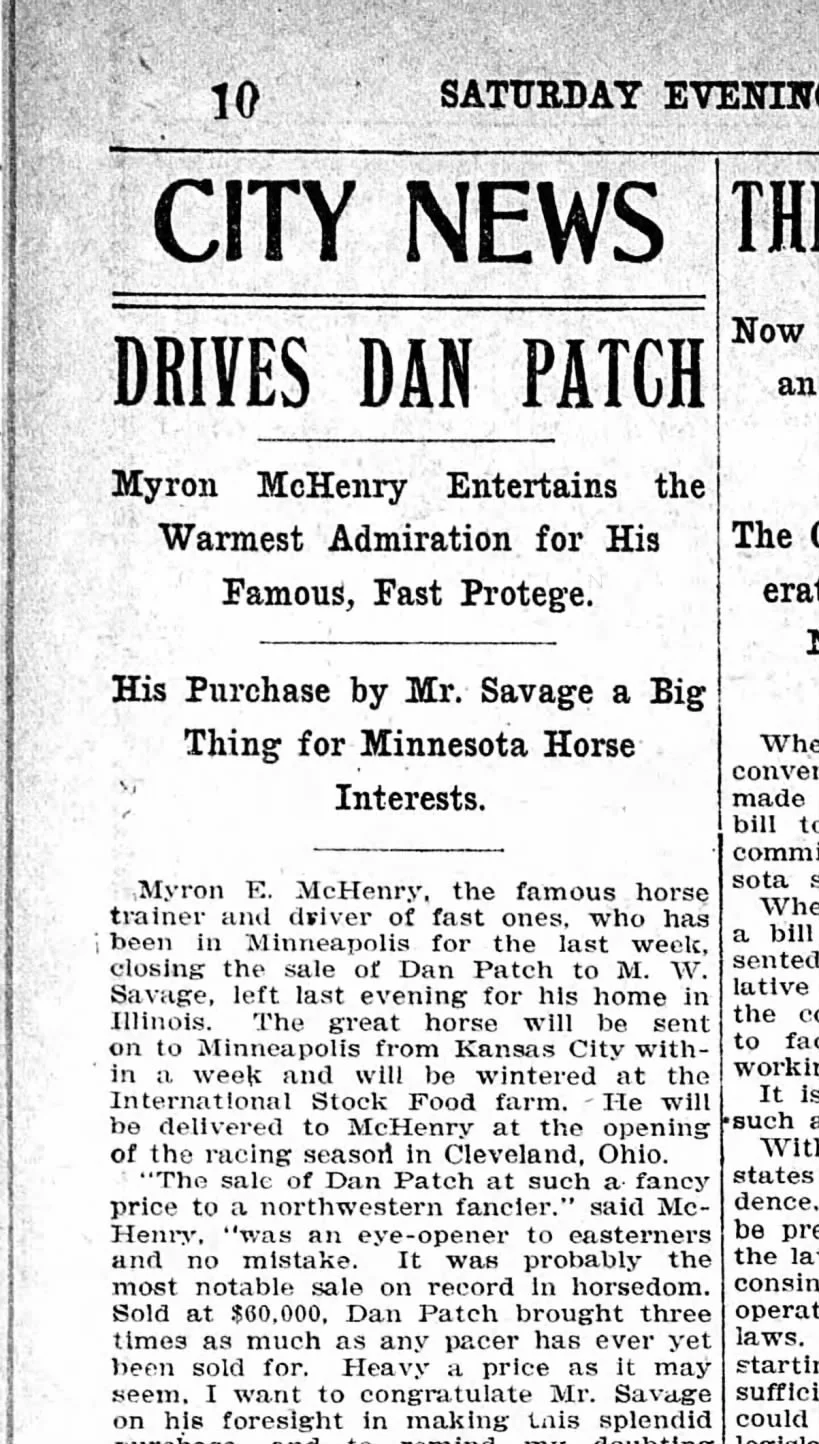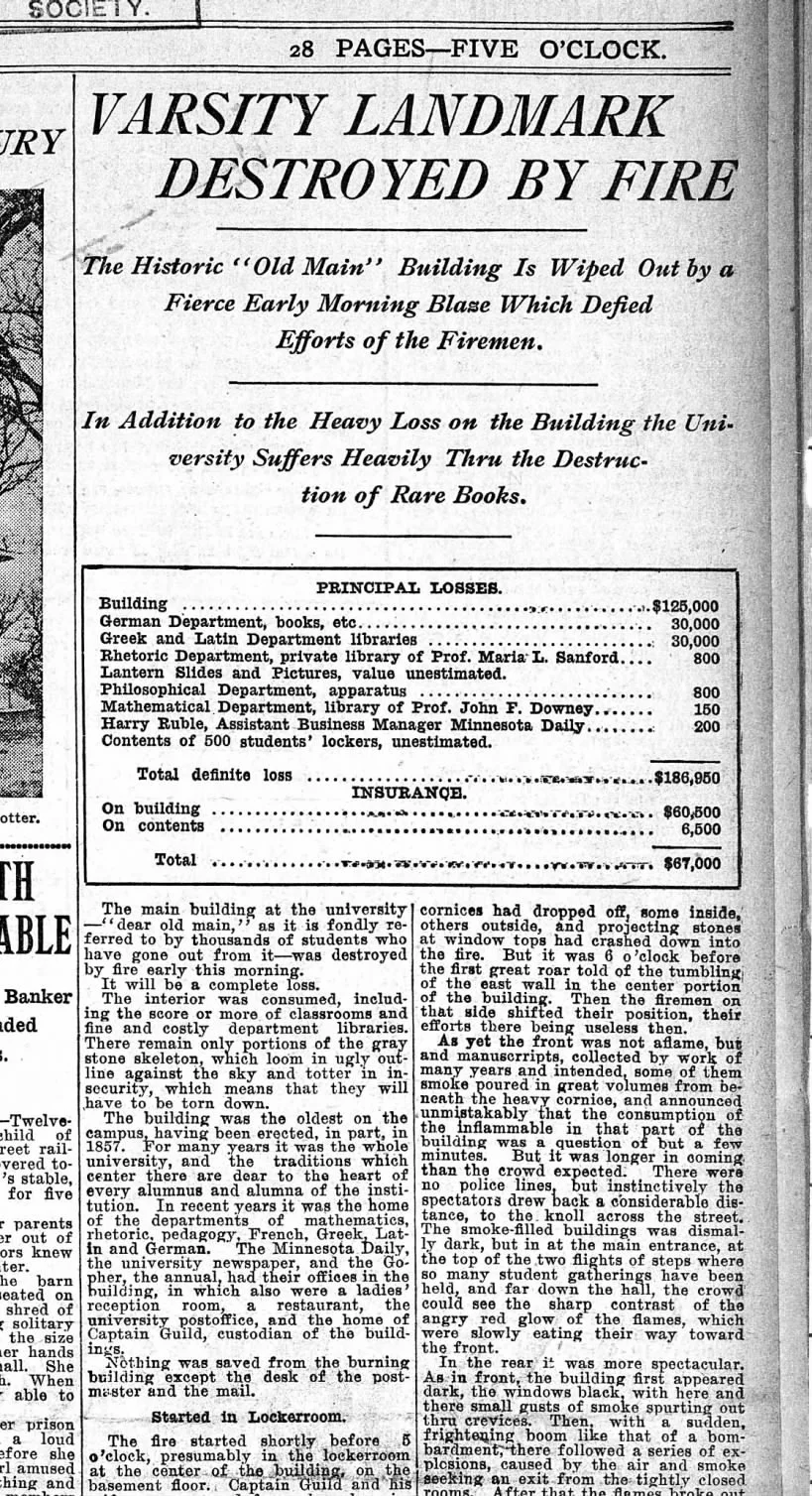Who was Dan Patch?
I always get turned around at the Minnesota State Fair. I try to use the street signs to find my way and one of the main roads is called Dan Patch Avenue. Who was Dan Patch? Financial tycoon? Early leader of Minnesota? A professional athlete? Well, sort of. He was a race horse.
Bred in Indiana, Dan Patch was a standardbred pacing horse when harness racing was extremely popular at the end of the 19th century. As a colt he had crooked legs and was almost put down, but he was friendly and smart so his owner trained him to pull sleighs and carts. A special shoe and a wider cart eventually turned Dan Patch into an unbeatable pacer.
In 1902, Marion Savage of Hamilton, Minnesota bought Dan Patch for the insane price of $60,000 (almost $2 million today). Savage owned a feed company and used the horse in his advertising. Savage built an enormous stable - nicknamed the Taj Mahal and even an indoor race track.
Traveling the racing circuit in a custom rail car, Dan Patch was a fan favorite and a winner - he evenstarted setting records. For months the anticipation for his appearance at the 1906 Minnesota State Fair was inescapable. The Grandstand was packed when Dan Patch set a new world record of 1 minute 55 seconds.
Savage put Dan Patch on products from tobacco to coffee, music and movies. His name was on automobiles and a railroad, too. He’s even immortalized in the song “Ya Got Trouble” from the Broadway musical, “The Music Man”.
“And the next thing you know your son is playing for money in a pinch-back suit
And listenin' to some big outta town jasper, hearin' him tell about horse race gamblin'
Not a wholesome trottin' race, no, but a race where they set down right on the horse
Like to see some stuck-up jockey boy, settin' on Dan Patch? Make your blood boil!
He earned over a million dollars a year in sponsorships and was considered the most famous athlete in America. Not just most famous animal athlete, most famous athlete - period. He wasn’t dethroned for more than a decade until the Great Bambino, Sultan of Swat, Babe Ruth took his place in the 1920s.
Dan Patch lived a long life in retirement and died in 1916. His owner, Marion Savage died just one day later. In his honor, the town of Hamilton chose a new name: Savage, Minnesota.
Dan Patch’s racing record stood for 54 years - but his stables did not. The Taj Mahal burned down in 1922. Sadly, the town of Savage hasn’t made much effort to commemorate their hometown hero. The stable gone and Savage’s homes demolished, the best place to get a sense of their history is at the extremely well-kept museum inside the Savage branch library.
A popular nugget of knowledge that always comes up with the subject of Dan Patch is that the racetrack can still be seen on Google Maps Satellite View.
To know where to look, we’ll start with a plat map that shows where Marion Savage owned land in Scott County. (His mansion was just across the river in Hennepin County, but has also been demolished to make way for the Minnesota Masonic Home).
You can see “M. W. Savage” owned the land in the top right corner of the county.
Our next clue is an aerial map from 1940.
Clear as day, you can see the 1 mile track by the river and the 1/2 mile and 1/4 mile tracks in the lower left. These smaller tracks were briefly used for greyhound racing until they were shut down for illegal gambling.
Those smaller tracks align just north of Highway 13.
As of this writing, looking at Google Maps you can barely see the eastern end of the smaller tracks. The larger track is more vague, filled in with trees now, but the shape is still there.
It is slightly clearer if you zoom in on the map for each of the tracks separately.
Sooner or later, the tracks will be completely erased by vegetation (if not development). It will be up to the loyal fans of the Dan Patch Historical Society and the Minnesota State Fair to keep the legend alive.


































